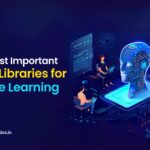Defining “Real” AI
Artificial Intelligence (AI) refers to various technologies that perform tasks requiring human-like intelligence, such as learning, reasoning, problem-solving, and understanding language. AI is generally divided into two categories: Narrow AI and General AI.
- Narrow AI: These systems are designed for specific tasks, like recommendation engines or image recognition. While they can outperform humans in certain areas, they lack overall intelligence. LLMs are an example of Narrow AI.
- General AI: Also called Strong AI, this refers to machines with the ability to understand, learn, and apply knowledge across different tasks, much like humans. However, General AI remains theoretical and has not yet been achieved.


How Large Language Models (LLMs) Work
LLMs, like GPT-4, are examples of narrow AI. They are trained on vast amounts of text data, learning patterns, structures, and meanings in language. By adjusting billions of parameters in a neural network, LLMs can predict the next word in a sentence, allowing them to generate relevant and coherent text.
Here’s a simple breakdown of their process:
- Data Collection: LLMs are trained on diverse text from books, articles, and websites.
- Training: Using techniques like supervised and reinforcement learning, they fine-tune their internal parameters to improve predictions.
- Inference: After training, LLMs can perform tasks like generating text, answering questions, and translating languages.
Simulating vs. Possessing Intelligence
- Simulating Intelligence: LLMs are excellent at mimicking human-like responses based on patterns they’ve learned. However, they don’t actually understand or reason—it's all pattern recognition.
- Possessing Intelligence: True intelligence involves understanding, reasoning, and applying knowledge in diverse contexts. LLMs lack this—they don’t have consciousness or real comprehension.
The Turing Test and Beyond
The Turing Test, proposed by Alan Turing, suggests that if an AI can engage in conversation indistinguishable from a human, it can be considered intelligent. Many LLMs can pass simplified versions of this test, leading some to argue they are intelligent. However, passing the test doesn’t mean they have real understanding or consciousness—it just shows they are skilled at imitation.
Practical Applications and Limitations
LLMs are incredibly useful in many areas, but they also have limitations:
- Practical Applications: LLMs excel in language tasks, like automating customer service, creative writing, and language translation.
Limitations
- Lack of Understanding: They don’t grasp meaning or context—they can’t form opinions or understand abstract ideas.
- Bias and Errors: LLMs can replicate biases from their training data and sometimes produce incorrect or nonsensical outputs.
- Data Dependence: Their knowledge is limited to what they were trained on and can’t reason beyond learned patterns.

Conclusion
LLMs are a major breakthrough in AI, excelling at generating human-like text. However, they don’t possess real intelligence. These models are advanced tools built to handle specific tasks in natural language processing. The difference between simulating intelligence and truly having it is clear: LLMs aren’t conscious and can’t understand or reason like humans. Still, they represent the power and limitations of narrow AI.
As AI progresses, the line between simulation and true intelligence may blur. For now, LLMs highlight the impressive achievements made possible by machine learning, even if they are only imitating intelligence.
Start improving your Python/Power BI/AI skills today! Subscribe to get simple tips and updates to help you learn and grow.



